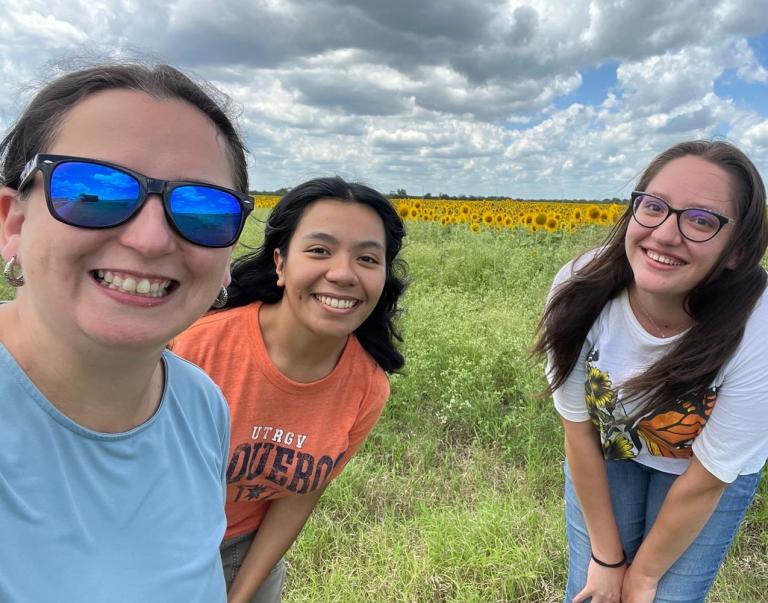Conservation Reserve Program (CRP)
Conservation Reserve Program (CRP)
What is this program?
Farmers enrolled in this program agree to remove environmentally sensitive land from production and plant species, such as approved grasses or trees (known as “covers”) to control soil erosion, improve water quality, and develop wildlife habitat. In return, FSA provides participants with rental payments and cost-share assistance.
There are 3 types of CRP enrollment options:
- General CRP: Helps producers and landowners establish long-term, resource-conserving plant species, such as approved grasses or trees, to control soil erosion, improve water quality and enhance wildlife habitat on cropland
- Grassland CRP: Emphasizes support for grazing operations, plant and animal biodiversity, and grassland and land containing shrubs and forbs under the greatest threat of conversion
- Continuous CRP: Under continuous CRP, land can be enrolled in CRP at any time. Continuous CRP includes:
- CLEAR30: Prioritizes water quality practices on the land that, if enrolled, will help reduce sediment loadings, nutrient loadings, and harmful algal blooms
- Conservation Reserve Enhancement Program (CREP): Leverages federal and non-federal funds to target specific State, regional, or nationally significant high-priority conservation concerns
- State Acres for Wildlife Enhancement (SAFE): Focuses on establishing wetlands, grasses, and trees and enhancing important wildlife populations by creating critical habitat and food sources
- Farmable Wetlands Program: Aims to restore farmable wetlands and associated buffer
|
Managing USDA Agency |
Type of Assistance |
Who Should Apply |
Learn More |
|---|---|---|---|
| FSA |
Relief Payments: Annual rental payments at 90% existing rate and cost-share assistance up to 50% cost of installing conservation tools |
Producers with eligible cropland covered by CRP |
Visit |
How can I use this program?
Under the various CRP initiatives, enrollees can access technical and financial assistance to implement several conservation practices, including the following:
- Practices under CLEAR: Grass Waterway, Shallow Water Area for Wildlife, Contour Grass Strip, Filter Strip, Riparian Buffer, Denitrifying Bioreactor on Filter Strip and Riparian Buffer, Saturated Filter Strip and Riparian Buffer
- Practices under CREP: Establishment of Permanent Native Grasses, Permanent Wildlife Habitat, Shallow Water Areas for Wildlife, Filter Strips, Wetland Restoration on Floodplain and Non-floodplain, Riparian Buffer, and Prairie Strips
- Practices under SAFE: Wetland & Buffer SAFE Practices, Wetland Restoration on Floodplain and Non- floodplain, Prairie Strips Marginal Pastureland Wetland Buffer and Wildlife Habitat Buffers
- Practices under Farmable Wetlands Program: Farmable Wetlands Program (FWP) Constructed Wetland, FWP Aquaculture Wetland Restoration, FWP Flooded Prairie Wetland, Farmable Wetlands and Farmable Wetland Buffer
Who or what is eligible and what are the eligibility requirements?
Eligible applicants:
- A producer must have owned or operated the land for at least 12 months prior to submitting the offer or 12 months before the close of General or Grassland CRP signups, unless one of the following requirements are met:
- The new owner acquired the land due to the previous owner’s death;
- The ownership change occurred due to foreclosure where the owner exercised a timely right of redemption in accordance with state law; or
- The circumstances of the acquisition present adequate assurance to FSA that the new owner did not acquire the land for the purpose of placing it in CRP.
Eligible cropland:
- For cropland, land must be planted or considered planted to an agricultural commodity for four of six crop years from 2012 to 2017 and be physically and legally capable of being planted (no planting restrictions due to an easement or other legally binding instrument) in a normal manner to an agricultural commodity. For general signup, land also must meet one of the following criteria:
- Have a weighted average erosion index of eight or higher;
- Be enrolled in a CRP contract that expires September 30th; or
- Be located in a national or state CRP conservation priority area.
- The per-acre annual rental rate may not exceed the calculated rate or $300/acre. Producers may elect to receive a rental rate amount less than the maximum payment rate. Marginal pastureland may also be eligible for continuous signup. Grassland CRP has alternative requirements for eligible land.
Are there any deadlines?
- For General CRP and Grassland CRP, producers can enroll land during announced enrollment periods.
- Check the FSA CRP site for information on the next enrollment periods.
- For Continuous CRP enrollments, land may be enrolled in CRP at any time.
Is there anything else I should know?
- A contract duration is between 10 and 15 years.
- Additional incentives are available under Continuous CRP enrollment (including CLEAR30, CREP, SAFE, and Farmable Wetlands) including the following:
- Climate-Smart Practice Incentive: An incentive of three, five, or ten percent for CRP practices that will increase carbon sequestration, reduce GHG emissions, and otherwise are climate smart practices; The incentive amount is based on the estimated benefits of each practice.
- Water Quality Incentive: A 20 percent rental rate incentive for CRP water quality practices that will improve water quality by reducing sediment loading, nutrient loading, and harmful algae blooms.
How do I apply?
Producers interested in enrolling in CRP should contact the FSA office at their local USDA Service Center.
AskUSDA
One central entry point for you to access information and help from USDA.
AskUSDA.gov | askusda@usda.gov | 1-833-ONE-USDA
Ask a Question
Page last updated: May 2, 2023


